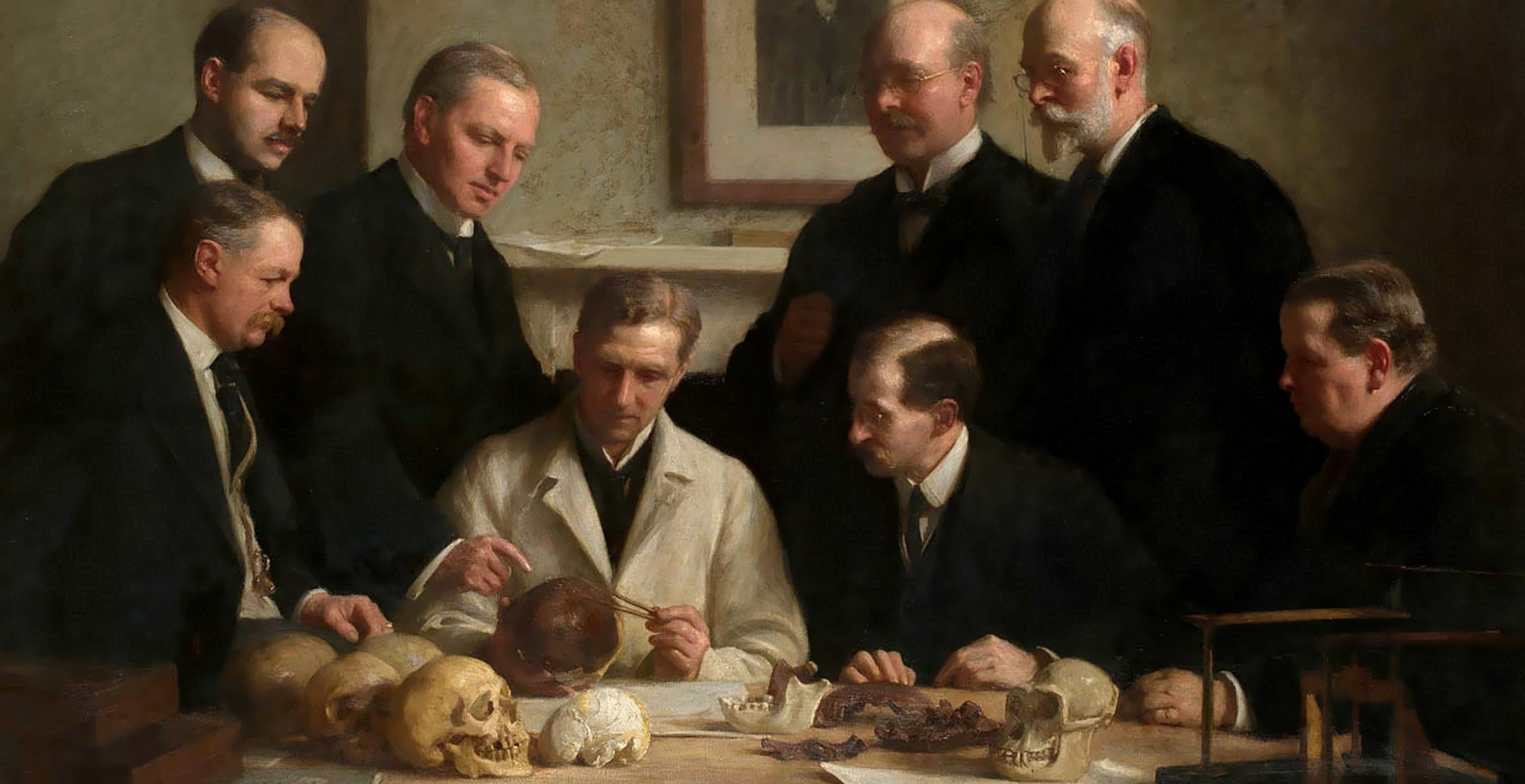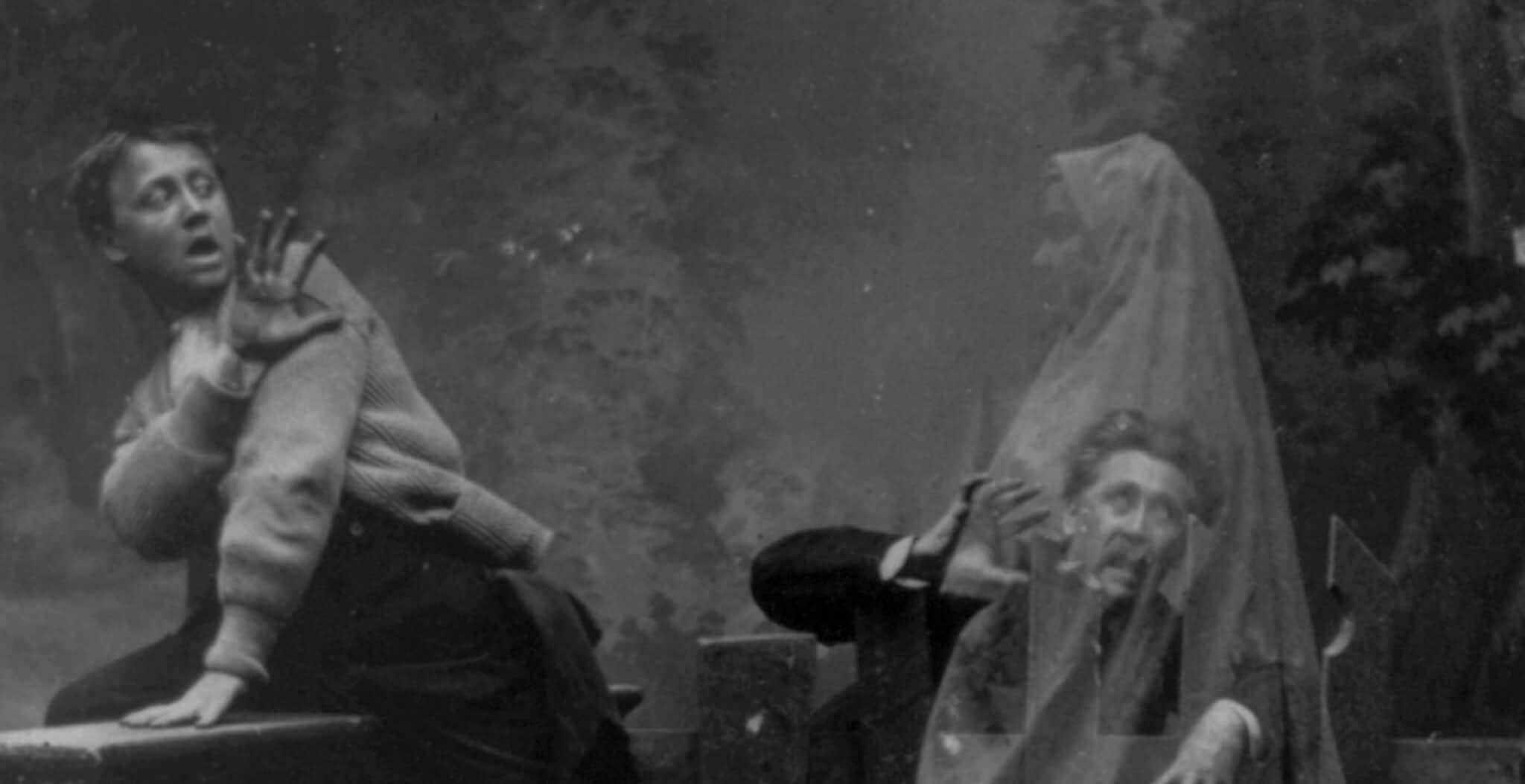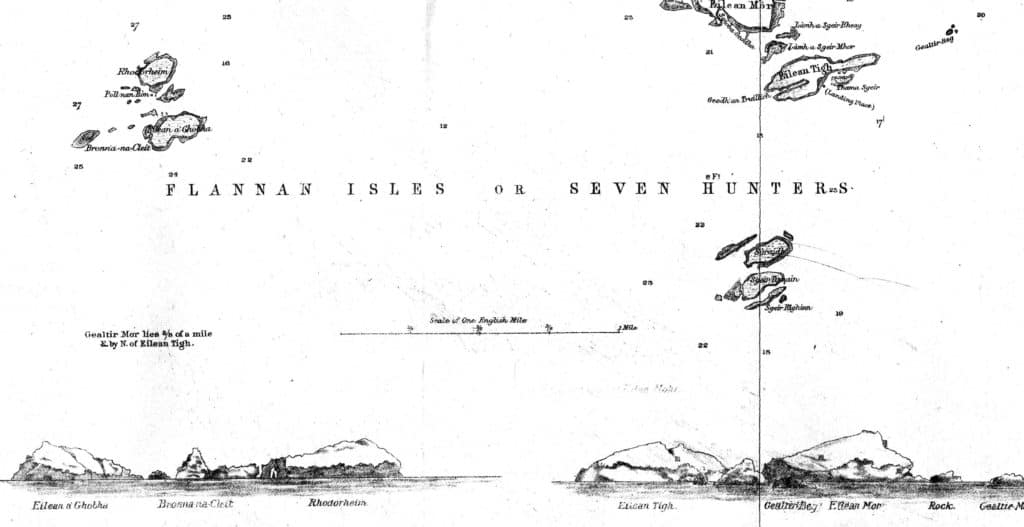It was a storyline worthy of the world’s most famous detective, Sherlock Holmes; and Sir Arthur Conan-Doyle, the creator of the great sleuth, was caught up in the plot. In 1912, a solicitor named Charles Dawson, who had antiquarian interests and ambitions to be a Fellow of the prestigious Royal Society, announced that a fossil representing the missing link between humans and apes had been found. Dawson was an amateur, but he had the support of professional palaeontologist Arthur Smith Woodward.
The remains of Eoanthropus dawsoni, Dawson’s Dawn-man, had emerged from Dawson’s excavations in a Pleistocene-era gravel pit near Piltdown in Sussex. Piltdown Man, as he later became known, had everything required to hit the headlines: he was half a million years old, he was unique, and he had all the home counties breeding anyone could want. Our oldest human ancestor came from England! The right part of England, at that!
Darwin’s theories on evolution were well-established by the early 1900s, and the hunt had been on for some time for an as yet unknown creature that would mark the point at which humans and apes began their separate evolutionary development. Since the discovery of “Heidelberg Man,” Homo heidelbergensis, in Germany in 1907, the quest to find an even older human fossil had turned into outright competition.
The date of the revelation of Piltdown Man was no coincidence, since within two years Britain and Germany would be at war and even the pieces of an ancient fossil could play a part in national jealousies. When Dawson first wrote to Woodward about his discovery, he told him that here was a rival for Homo heidelbergensis. Dawson’s personal ambitions were in line with the national sentiment of the time. Smith Woodward, who was then Keeper of Geology at the Natural History Museum in London, was understandably gripped by the findings of his trusted friend and colleague Charles Dawson, who was held in high regard in Sussex.
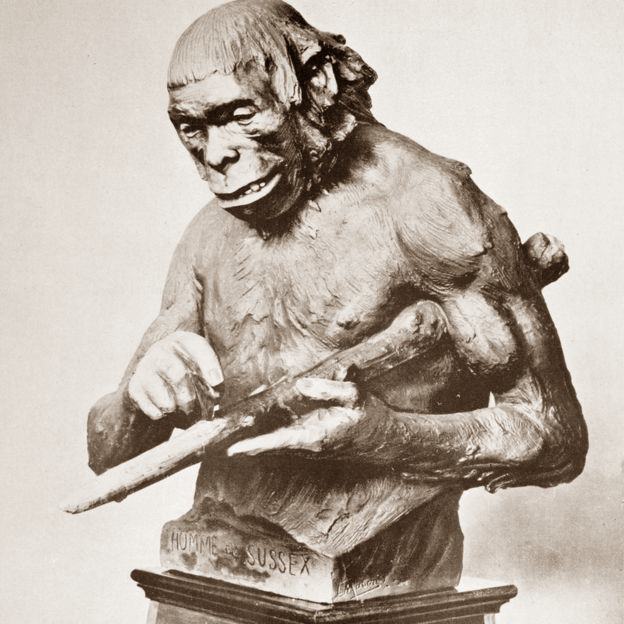
What exactly had Dawson found? Early in 1912, he told Smith Woodward that workmen had discovered part of a skull in 1908, failed to identify it properly, and had broken it up. He now possessed a piece of the cranium. Smith Woodward and Dawson went back to the gravel beds to see if more fragments could be found. They discovered not only more cranium fragments, but also half a lower jaw bone, animal remains and stone tools. Collectively, the assemblage seemed to reveal an interesting narrative about one of our earliest ancestors.
Then in December 1912, at a meeting of the Geological Society of London, the two men presented the fruits of their research. Smith Woodward had created a reconstruction of Piltdown Man’s extraordinary features, which combined characteristics that were both ape and human. The skull favoured the human, though smaller in size than modern skulls. The jawbone was almost identical with that of a modern chimpanzee. Alarm bells should have rung at that point, but the nation was too tickled by the idea that our earliest human ancestor was, like God, obviously an Englishman. A potential date of 500,000 years was set for his age. The results were, on the whole, greeted enthusiastically by the scientific community. The nation applauded.
It didn’t take long for the Doubting Thomases to emerge, though. One of the first was Arthur Keith of the Royal Society of Surgeons, whose own reconstruction made Homo piltdownensis, his own choice of name, look far more human and less ape-like. (Much more appropriate for a Home Counties ancestor.) An academic from King’s College London, David Waterston, published a paper in 1913 pointing out that the reason Piltdown Man looked like a human with the jaw of a chimpanzee was because that was what he was: a human skull combined with the jaw of an ape.
By this point, the Piltdown parade was rolling along too merrily for anyone to want to rain on it. The discoverer of Heidelberg Man sportingly endorsed the discovery. The public loved it and of course Piltdown Man was a boon for cartoonists. Why, he’d even been the owner of a cricket bat shaped artefact made from a fossil elephant bone!
Smith Woodward’s reconstruction had included canine teeth that definitely favoured the ape over the human side of the family, even though the jaw hadn’t originally contained them. In 1913, further investigations of the spoil-heaps discovered, to everyone’s apparent surprise, an ape-like canine tooth that fitted the jaw. The discoverer of the canine was team member Pierre Teilhard de Chardin, the French Jesuit who was establishing an international reputation as a palaeontologist and geologist.
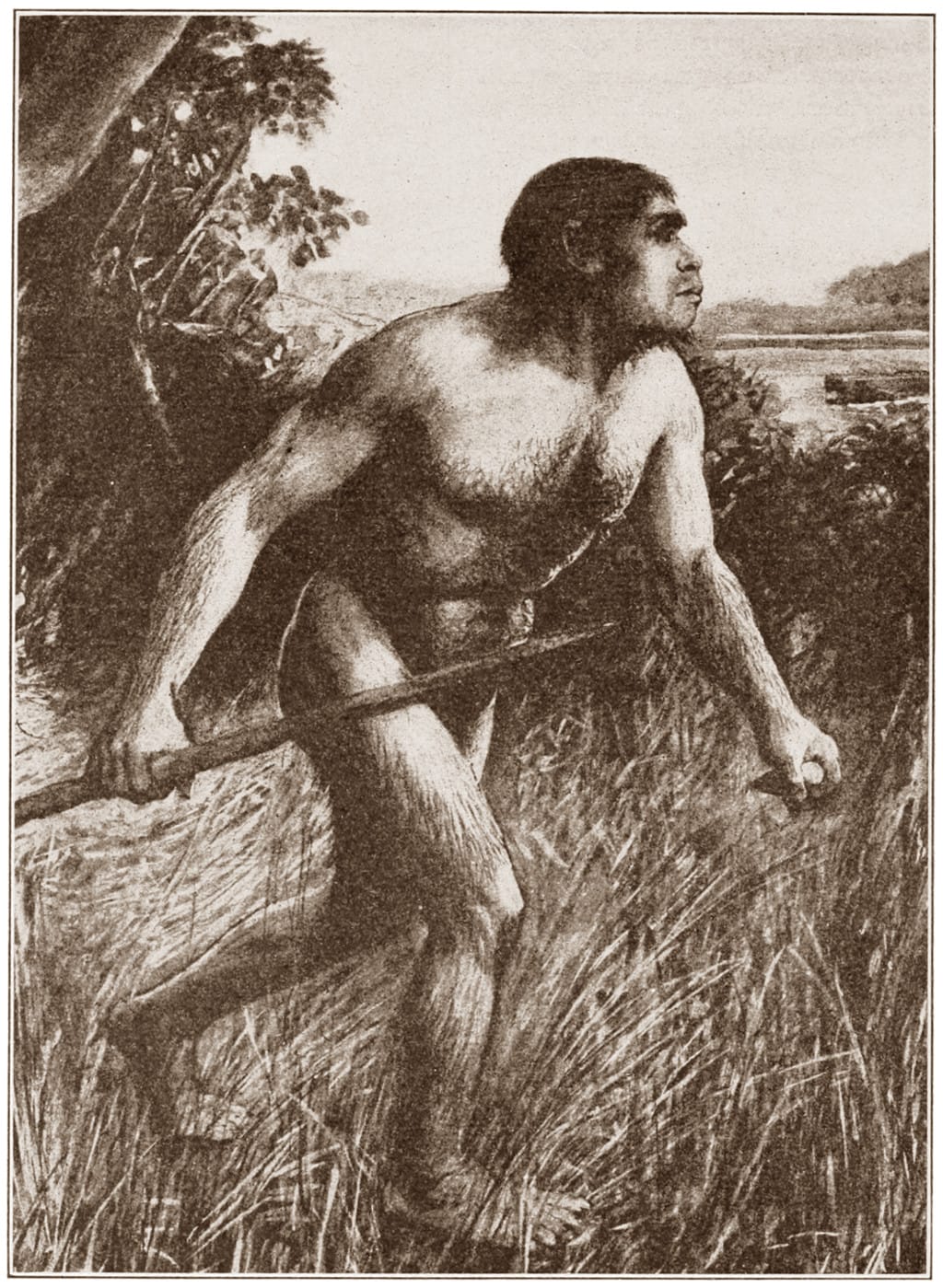
This discovery, the very thing that should have sealed matters, was in fact the first major crack in the story. Arthur Keith pointed out that the canine would have made it impossible for the molars to show the kind of wear that they did, since it wouldn’t allow the side to side chewing that is typical of humans. An academic bun-fight broke out, with anthropologist Grafton Elliot-Smith, who would go on to build a reputation on his investigation of the royal mummies of ancient Egypt, siding with Smith Woodward. The dispute caused a permanent rift between Smith Woodward and Keith.
Piltdown Man had long-lasting consequences for the study of ancient humans. In 1914, the discovery of the Talgai skull in Australia was considered a confirmation of the authenticity of Piltdown Man rather than an important discovery in its own right. Scepticism continued too, with Marcellin Boule stating in 1915 that Piltdown Man consisted of an ape mandible and a human skull. A similar conclusion was made by Gerrit Smith Miller. Fortunately, Dawson discovered more skull fragments in 1915, though he wouldn’t say precisely where, quickly establishing it as “Piltdown II.” In 1923, Franz Weidenreich added to the controversy by saying not only were the remains a human skull with an orangutan jaw, but the teeth had obviously been filed down. By this time, Dawson was long dead.
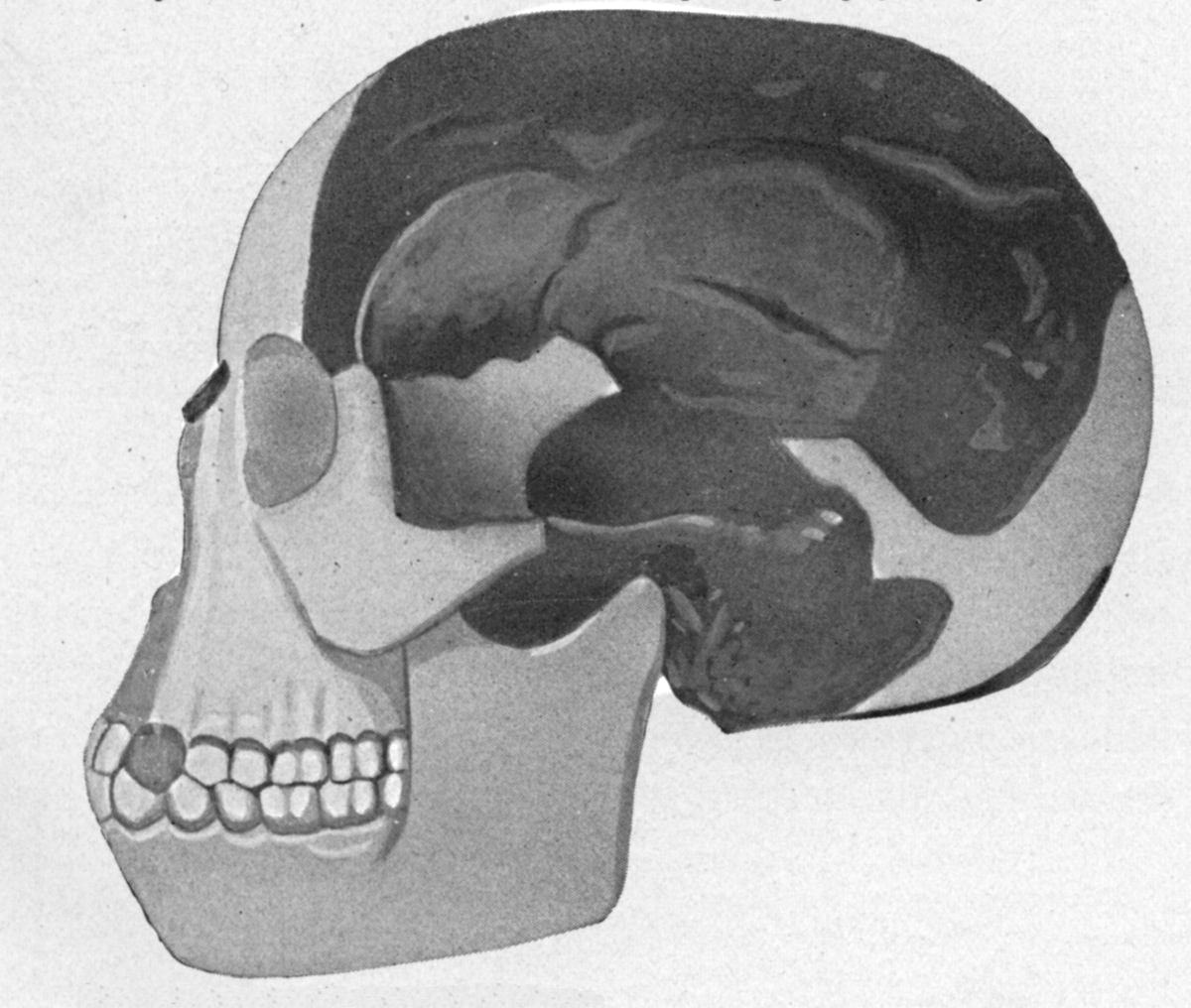
The case was finally busted by scientific investigators Kenneth Page Oakley, Sir Wilfrid Le Gros Clark and Joseph Weiner, whose independent results were published in The Times in 1953. Piltdown Man was a forgery composed of the remains of three species: human, chimpanzee and orangutan. The teeth had been filed to look more human and the collection had been stained with iron and chromic acid.
The question remained: who had been responsible for the hoax? The obvious choice was Dawson himself. He had the opportunity and above all the motive: ambition. However, the finger of suspicion also pointed at Teilhard de Chardin and Arthur Keith among others, as well as Sir Arthur Conan-Doyle, who lived nearby and was held to have his own reasons for damaging the reputation of the scientific establishment. Possibly Dawson’s stroke of genius lay in having “the workmen” discover the original skull and Teilhard de Chardin find the canine tooth, thus drawing attention away from himself.
In 2003, Miles Russell of Bournemouth University revealed that chief suspect Dawson had made a career out of fakery. Many of the items in his so-called antiquarian collection were fakes, with Russell concluding that Piltdown was “the culmination of a life’s work.” In 2016, a team from Liverpool John Moores University led by Isabelle De Groote used CT scans, DNA analysis and X-ray tomography to lay bare the methods used in the creation of Piltdown Man. Their conclusion was that it was the work of a single hoaxer, using material from a single orangutan from Borneo and perhaps three humans of medieval date. Dental putty had been used to hold the assemblage together. Since no further discoveries were ever made after Dawson’s death, the conclusion is that it was Dawson who did it. Elementary, my dear Watson, as Holmes never said.
Piltdown Man has variously been viewed as an embarrassing episode for the establishment, an amusing hoax and a criminal act. Perhaps the best description, as expressed by the academics who have worked hard to discover the truth, is “cautionary tale”. It may even be the case that the modern investigative methods that are now available to palaeo-anthropologists and archaeologists were given a boost by Piltdown Man, because no-one ever wanted this to happen again.
Miriam Bibby BA MPhil FSA Scot is a historian, Egyptologist and archaeologist with a special interest in equine history. Miriam has worked as a museum curator, university academic, editor and heritage management consultant. She is currently completing her PhD at the University of Glasgow.
